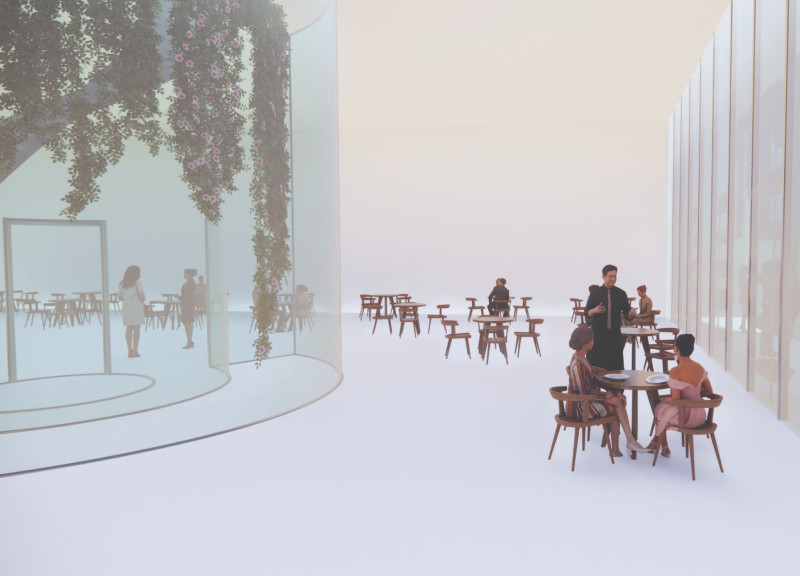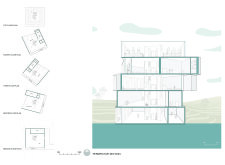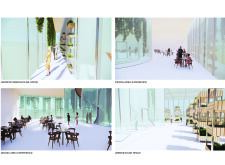5 key facts about this project
LIVING MACHINE is located in the Mývatn Region and is designed to connect with the natural landscape surrounding it. The building serves various functions while emphasizing the importance of visual experiences and sustainability. The design centers around a vertical concept, allowing visitors to interact with the environment and offering different perspectives as they move through the space.
Concept and Structure
The building features rotated and stacked spaces that create height, allowing expansive views of Mývatn Lake, Nature Baths, Grjótagjá Cave, and Hverfjall Volcano. This approach enhances the experience of the users, making it easier to appreciate the beauty of the natural surroundings.
Circulation and Spatial Organization
A central spiral staircase and elevator provide routes for movement within the building. These features are important not only for accessibility but also for encouraging interaction among visitors. The design makes circulation an integral part of how people experience the space.
Program and Function
On the second level, there is a multipurpose hall, while kitchens and dining areas occupy the third and fourth floors. These interior spaces are oriented thoughtfully to take advantage of views, helping users feel connected to the outside. The top level includes a greenhouse, which reinforces the idea of integrating greenspace into the building.
Sustainability and Materials
The building uses a geothermal heating system to respond to the cold climate in the area. This system employs low-temperature underfloor heating that helps manage heat loss through glazing. Additionally, a double façade system improves energy efficiency, aligning with the goal of sustainability. The structure incorporates materials such as gypsum board, insulation, and fiber cement boards, all of which contribute to the building's performance and durability.
The design layers different components together, creating a functional space that also encourages a relationship with the natural environment. Visitors can explore a carefully crafted atmosphere that emphasizes both utility and connection to the landscape.






















































